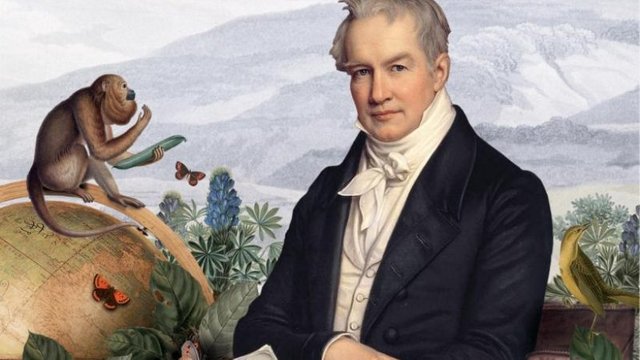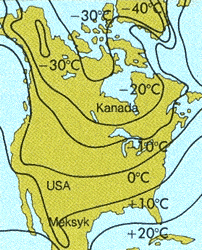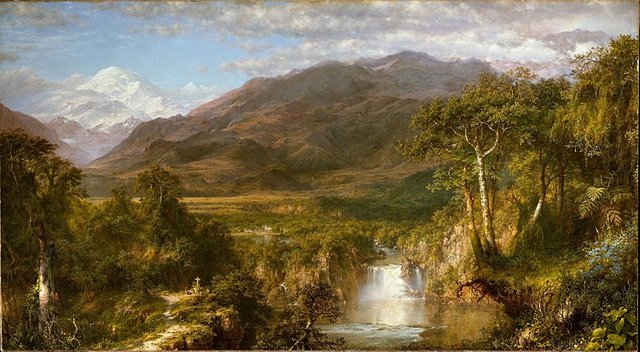Alexander von Humboldt - 10 reasons why you should learn about the greatest forgotten scientist and traveller
He is considered to be the last man who grasped the whole state of natural knowledge of his time. His 100th birthday was celebrated in many cities on five continents - people gathered in thousands to remember him from Melbourne, through Berlin and Paris, to Buenos Aires and the city of Mexico. The largest number of objects in the universe are called his name. Nevertheless, in the minds of people Alexander von Humboldt is not as well-known as Darwin, Einstein or Newton. And he should be!

image source
Alexander von Humboldt was born in 1769 in an aristocratic Prussian family. The inherited money allowed him to undertake long journeys where he undertook natural studies in the fields of geography, geology, botany, zoology and astronomy.
Here are 10 reasons why you should get to know him:
1. He has revolutionised how we perceive nature
Thanks to him, we understand nature as a sequence of countless interdependencies of elements connected with each other. We see it as a single, huge and global system, where seemingly unrelated phenomena have an impact on each other. He created a new paradigm, radical and unprecedented in his time. He was the first to recognise and prove that nature is a global force. Contrary to the naturalists of that time who analysed nature specimens in isolation, he suggested that even the smallest organisms cannot be treated separately from the environment in which they are found. His vision of nature today is so rooted in the modern world that it seems obvious and hardly anyone remembers who is behind it. He also laid the first foundations for studying landscape, climate science, oceanography and biogeography.
2. Creator of isotherms

Isotherms shown on North America
image source
3. He discovered the magnetic equator
He discovered the magnetic equator (acline) - a line on a magnetic map linking the zero magnetic inclination points, which did not, as it turned out, fully coincide with the geographical equator. In addition, together with Carl Friedrich Gauss, he has created an international organisation for research into magnetic phenomena.
4. He created one of the first infographics in the world

Fragment of Naturgemälde
image source
5. Pioneer of the ecological movement
Travelling around the world he observed how thoughtless environmental exploitation changes and, as a result, significantly impoverishes nature - he noticed that drying marshes and cutting down forests has a very negative impact on the environment. He's the creator of the term "a natural monument".
6. Opponent of colonialism and slavery
He was a passionate abolitionist. Despite his friendship with Thomas Jefferson, he directly criticised the United States for not carrying on slavery. Thanks to him a law abolishing the status of a slave to anyone who puts his foot in Prussia was passed. He was a dear friend of Simón Bolívar, the most important figure fighting for the liberation of the South American colony from the Spanish crown.
7. Author of "Kosmos"
Within 13 years he has written 4 volumes of "Kosmos" which tried to present the whole material world and the principles that govern it in one single work. To help describe the universe, he asked for help dozens of scientists from all over the world, thanks to which he possessed detailed knowledge from every topic of interest to him. In "Kosmos" he described the Milky Way, planets, comets, cosmic space, the movements of the Earth in space, its surface and its interior. He wrote about plants, animals, climate zones, volcanoes, magnetism, microorganisms, rocks, but also about people - social migrations, politics and social changes - all in a mutually related relationship.
8. Life full of adventures
His biography seems to be like an adventure novel or movie script, but it is completely true. He climbed up to a few volcanoes, including - considered at his time as the highest peak of the world - Chimborazo. Today it is known that it is not the highest mountain, although it is considered the most distant from the Earth's centre of gravity. No one has ever been at the same altitude as him before. During his five-year trip around Latin America he has also explored the Orinoko river basins, Cuba, Peru and Mexico. At the age of 60, he made a trip to Russia at the Mountains of Ural and Almaty, to the Chinese Jungary and the Caspian Sea. He travelled through steppes, jungles, rivers, mountains and forests. Many times being in danger, experiencing illness and sense of lost. He never gave up and always greedily tried to understand the world of nature.
9. Hypothesis of connected continents
He was the first to suggest that South America and Africa were once united.
10. Inspiration for hundreds of scientists, philosophers and artists

One of Ernst Haeckel's illustrations
image source
We could go on and on with Humboldt's influences and discoveries. His combination of subjective experiences with science and his multidimensional, holistic view of nature has infected the entire scientific world. Today we can observe such narratives in every natural textbook or program on the BBC. Alexander von Humboldt was a truly unique figure and deserves to be remembered and recalled much more often!

"The Heart of the Andes" by Frederic Edwin Church, a painter who followed Humboldt's footsteps to illustrate his descriptions of South America's wonderful nature
image source
Bibliography:
De Terra, H. (1979). Humboldt: The life and times of Alexander von Humboldt, 1769-1859. O
Nicolson, M. (1990). Alexander von Humboldt and the geography of vegetation. Romanticism and the Sciences, 169-85.
Wulf, A. (2015). The invention of nature: Alexander von Humboldt's new world. Knopf.
nice post. I didn't know of him.
Glad you liked it :)
Upvote this comment!
|Upvote the latest dropahead Daily Report!
-------- | ---------Join the dropahead Curation Trail
|to maximize your curation rewards!
Proxy vote dropahead Witness
|with SteemConnect
Delegate/donate STEEM POWER to @dropahead
###### Do the above and we'll have more STEEM POWER to give YOU bigger rewards next time! --- News from dropahead: Bye bye 25+ and 50+! Welcome 20+ 40+ and 60+!Hello saunter,
That was a really excellent post. Humboldt was a truly incredible man. Thank you for shedding some much deserved limelight on this genius!
I like your style and blog so am following you now :D
Upvoted and resteemed!
Wow, thank you man for such an appreciation :) I'll do my best to satisfy you with further posts :)
This post has received a 3.13 % upvote from @drotto thanks to: @icedrum.
Congratulations! This post has been upvoted from the communal account, @minnowsupport, by Saunter from the Minnow Support Project. It's a witness project run by aggroed, ausbitbank, teamsteem, theprophet0, someguy123, neoxian, followbtcnews/crimsonclad, and netuoso. The goal is to help Steemit grow by supporting Minnows and creating a social network. Please find us in the Peace, Abundance, and Liberty Network (PALnet) Discord Channel. It's a completely public and open space to all members of the Steemit community who voluntarily choose to be there.
If you would like to delegate to the Minnow Support Project you can do so by clicking on the following links: 50SP, 100SP, 250SP, 500SP, 1000SP, 5000SP. Be sure to leave at least 50SP undelegated on your account.
@originalworks
The @OriginalWorks bot has determined this post by @saunter to be original material and upvoted(1.5%) it!
To call @OriginalWorks, simply reply to any post with @originalworks or !originalworks in your message!